Welcome to the world of vertical vegetable gardens! Whether working with a cozy outdoor space or a neat, raised bed, adding a trellis to your garden can elevate your gardening game. This guide will explore creative vegetable garden ideas that will leave you smiling and excited to grow.
Let’s dive into the incredible benefits and creative vertical gardening techniques for veggies!
A vertical vegetable garden is a fantastic way to maximise your growing space, especially if you’re working with limited space. By growing plants upwards, you can cultivate a variety of vegetables in a compact area, making it perfect for urban or small gardens.
Think of a trellis as your plants’ best friend. It’s a supportive structure made from wood, metal or plastic, designed to help your vining plants reach new heights. This method allows your plants to grow up, saving space and giving them plenty of fresh air to thrive. Plus, healthier plants mean a happier garden!
Vertical gardening offers numerous benefits, especially for those looking to maximise their home garden:
– Maximises Your Space: Perfect for those charming small gardens or urban nooks.
– Boosts Plant Health: Enjoy better airflow and a reduced risk of diseases.
– Easier Harvesting: Fresh veggies are just a reach away—no bending or crawling necessary!
– Visual Delight: Trellises add a touch of charm and beauty to your garden landscape.
Which Veggies Need a Trellis?
Trellising is a fantastic option for many vining vegetables (and technically some fruits). By providing proper support, you can help these plants reach new heights and thrive.
Here are some of our favourite vining vegetables that love growing on a trellis. Click to jump and learn more for your own vertical veggie garden.
Eggplant
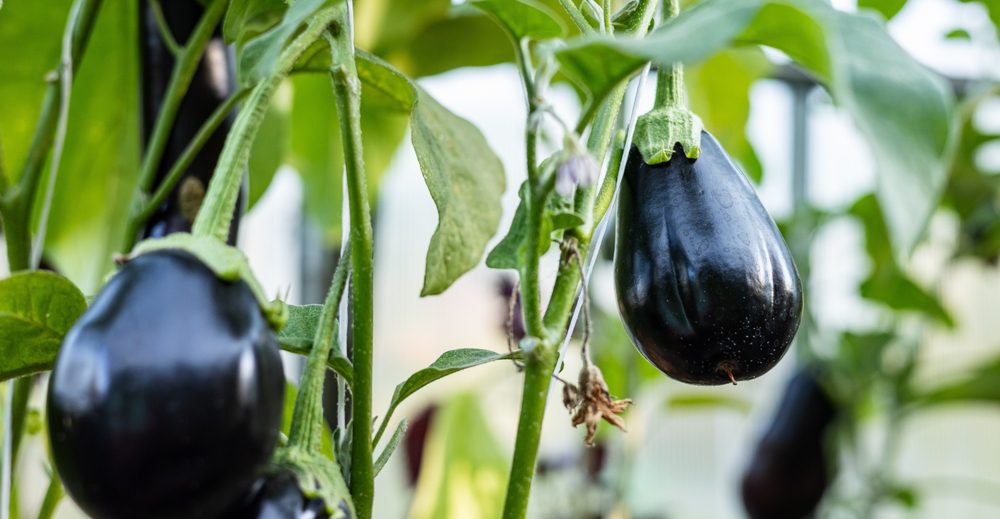
Eggplants flourish when given the proper support, and a sturdy trellis can make all the difference in keeping them upright and thriving.
Top tips for growing aubergines vertically:
- Timing: Plant aubergine seedlings when the soil is beginning to warm back up. Depending on your location, this will be sometime between September and November, with soil reaching ideal temperatures earlier the more north you are.
- Supports: Use trellises or tomato cages to help the eggplant grow upright.
- Training and Tying: Position the support around the plant and gently secure the stems with VELCRO® Brand ONE-WRAP® Plant Ties.
- Maintenance: Regularly prune side branches and tie up loose stems to keep the plant well-supported. Water deeply once a week or when the top inch of soil feels dry.
Beans
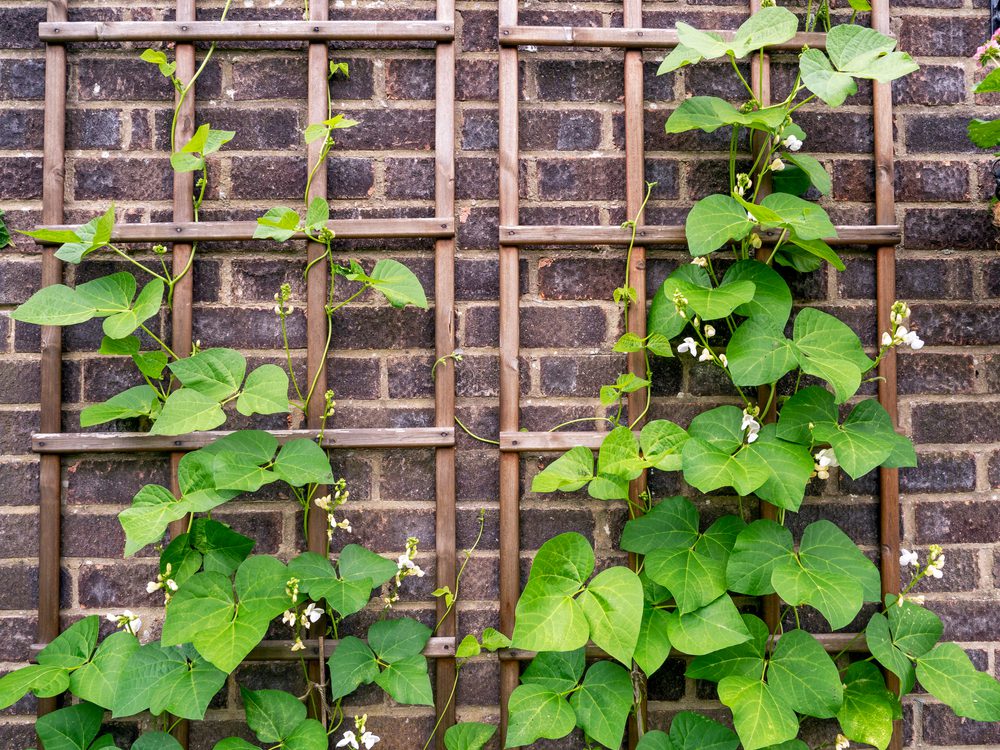
Beans are natural climbers, and providing them with a sturdy trellis can transform your garden into a lush, green haven. They’re the perfect addition for your vertical vegetable garden.
How to grow beans vertically:
- Timing: Plant bean seeds directly in the soil after the last frost (typically around September).
- Supports: Use trellises or poles to help the beans climb.
- Training and Tying: Guide the bean vines to grow upwards by gently twining them around the support.
- Maintenance: Regularly check for pests and tie up loose vines to keep the plant well-supported. Water every 2 – 3 days during active growth.
Capsicum
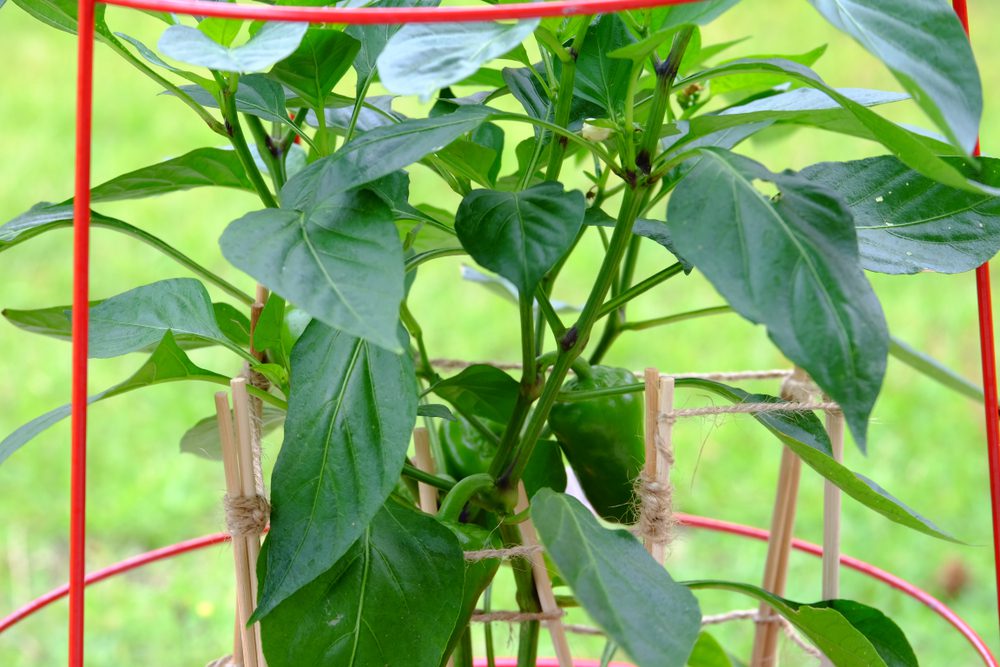
Capsicum can become quite heavy as they grow, and trellising is essential to support their weight and keep them stable.
Top tips for vertically grown capsicum:
- Timing: Start capsicum seeds indoors 6 – 8 weeks before the last frost and transplant the seedlings when the chance of frost is over, usually in late August-mid September.
- Supports: Use trellises or stakes to help the capsicum grow upright.
- Training and Tying: Position the support around the plant and gently secure the stems with VELCRO® Brand ONE-WRAP® Plant Ties.
- Maintenance: Tie up loose stems to keep the plant well-supported. Water once per week, adjusting for temperature and container size. Allow the soil to dry between waterings.
Tomatoes
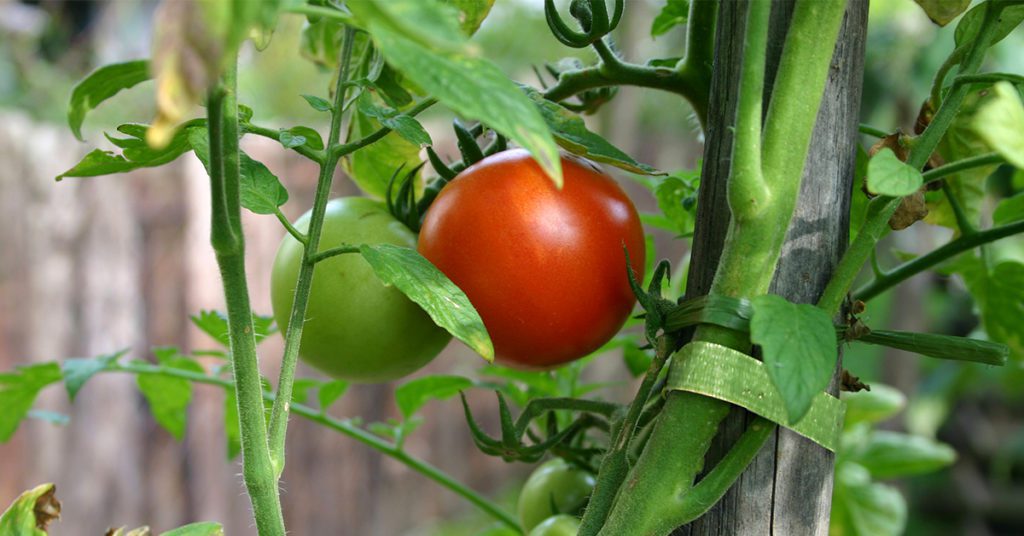
Tomatoes are perfect candidates for a vertical setup—don’t forget to tie them up with VELCRO® Brand Garden fasteners.
Here are our top tips for vertically growing vine tomatoes:
- Timing: Plant your tomato seedlings around mid-October. To prevent disease, begin tying them up when they are 15 – 25cm tall.
- Supports: Use gentle plant ties, such as VELCRO® Brand ONE-WRAP® Plant Ties, which you can adjust as the plant grows.
- Trellis or Tomato Cage: Place a trellis or tomato cage around the plant and loosely wrap the tie around the stem and the support structure.
- Maintenance: Check daily for loose branches and tie them up to keep the plant well-supported. Water 2.5 – 5 cm per week, adjusting based on weather and soil moisture.
Zucchini
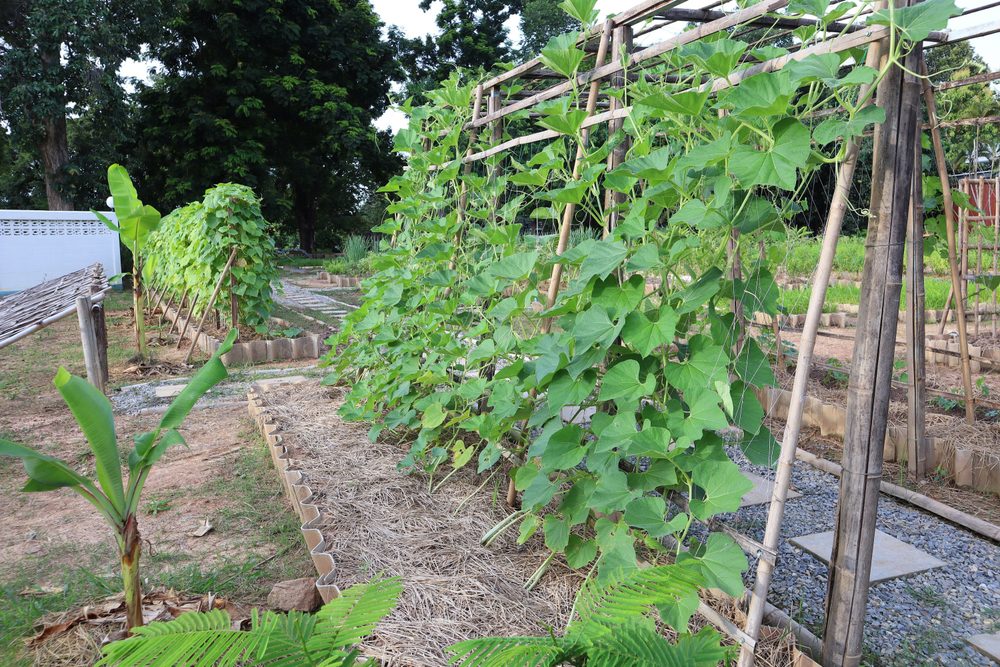
Growing zucchini vertically is a fantastic way to save space and promote healthy growth. With the right support, your zucchini plants are sure to thrive in your vertical vegetable garden.
Top tips for growing zucchini vertically:
- Timing: Plant zucchini seeds or seedlings in a sunny spot with well-draining soil when the ground is at least 18 – 21°C (September-January is a typical timeframe).
- Supports: Use stakes or trellises to help the zucchini grow upright.
- Training and Tying: Position the support around the plant and use garden ties to gently secure the stems.
- Maintenance: Prune bottom leaves and tie up loose stems to keep the plant well-supported. Water every 2 – 3 days, adjusting for climate and soil conditions. Monitor soil moisture to prevent over- or under-watering.
Herbs
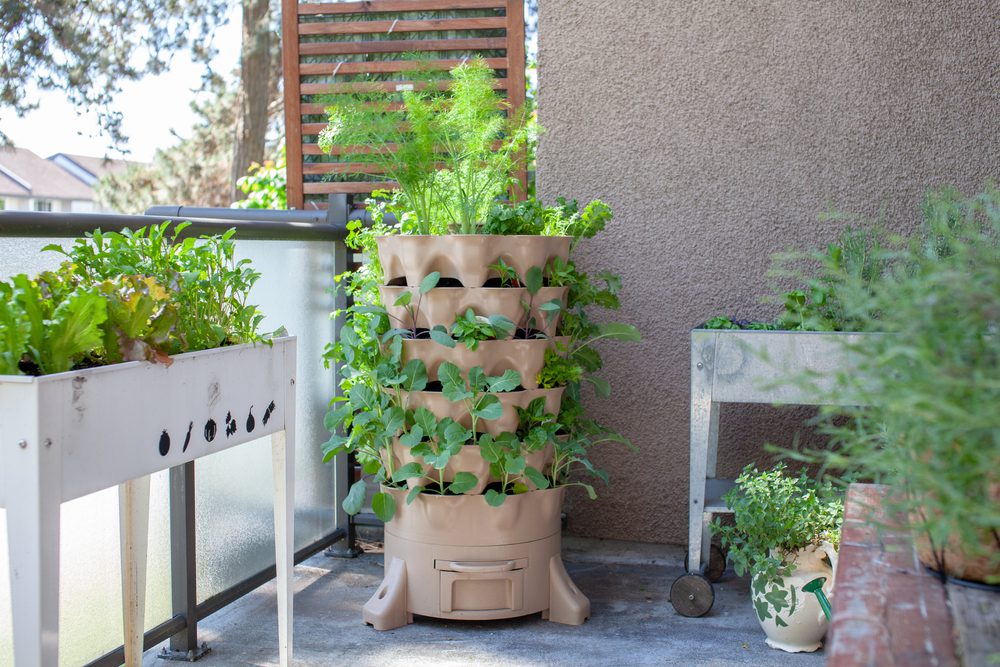
Mix and match your favourite herbs for easy access and wonderful flavours. You can use a garden tower or make a vertical herb garden on a wall.
Top tips for vertical herb gardens:
- Location: Choose a sunny spot that receives at least 6 – 8 hours of direct sunlight daily (this may vary according to your herb variety).
- Containers: Use vertical planters, hanging pots or DIY options like our vertical herb garden on a wall. Ensure they have drainage holes.
- Soil: Fill containers with a well-draining potting mix enriched with organic matter.
- Planting: Select herbs suited for vertical gardening, such as basil, mint, parsley and thyme.
- Maintenance: Prune as needed and rotate plants to ensure even growth. Watering varies with your herbs—some prefer drier conditions.
Cucumbers
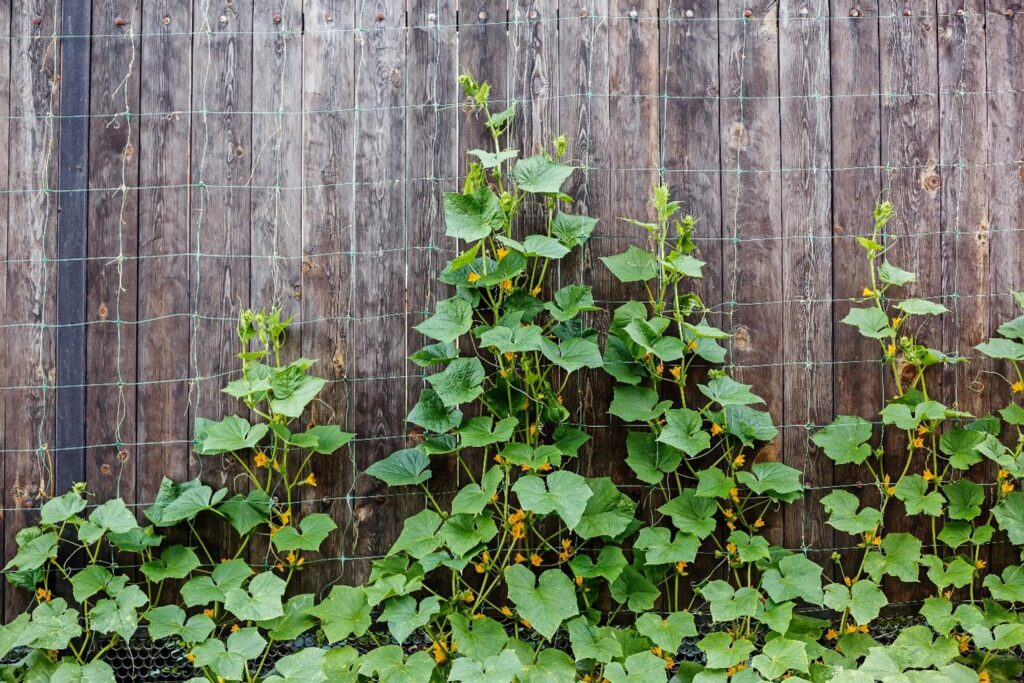
Growing cucumbers vertically is an excellent way to save space and ensure healthy growth. Enjoy their climbing nature and elevate your gardening style.
How to grow cucumbers upwards:
- Timing: Plant cucumber seeds in a sunny spot when temperatures are at least 20ºC. Space them 45cm apart.
- Supports: Use vertical supports like trellises or tomato cages to help your cucumbers climb and save space.
- Training and Tying: Position the support around the plant, using your trusty VELCRO® Brand ONE-WRAP® Plant Ties to gently secure the vines to the structure.
- Maintenance: Water 1 – 2 inches weekly, keeping the soil moist but not waterlogged, and tie up loose vines as needed.
Sugar Snap Peas
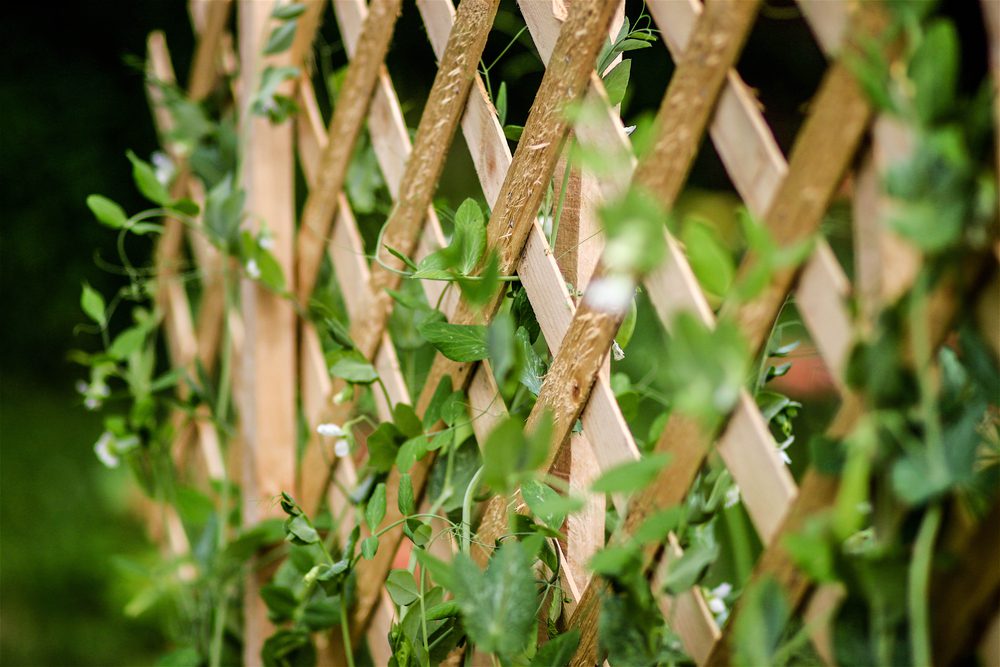
Sugar snap peas are delightful vining wonders that are easy to grow and thrive with a proud trellis support. With the right care, your snap peas will climb high and produce crisp, delicious pods.
How to care for snap peas:
- Timing: Plant snap pea seeds directly in the soil between February and May, based on your location.
- Supports: Use trellises or netting to help the sugar snap peas climb.
- Training and Tying: Guide the pea vines to grow upwards by gently twining them around the support.
- Maintenance: Regularly check for pests and tie up loose vines to keep the plant well-supported. Water every 2-3 days during active growth.
You can mix various trellis vegetable plants and herbs to create a thriving mini-ecosystem! Here are some combinations for maximum growth and yummy yields:
– Tomatoes and Basil: A classic duo! Basil helps keep away pesky pests.
– Cucumbers and Radishes: Radishes can help deter cucumber beetles—what a team!
– Capsicum and Carrots: These two share similar growth needs.
– Lettuce and Herbs: Lettuce pairs well with herbs like parsley and chives, creating a flavourful mix.
– Beans and Pumpkins: Beans can climb while the pumpkin spreads out, utilising space efficiently.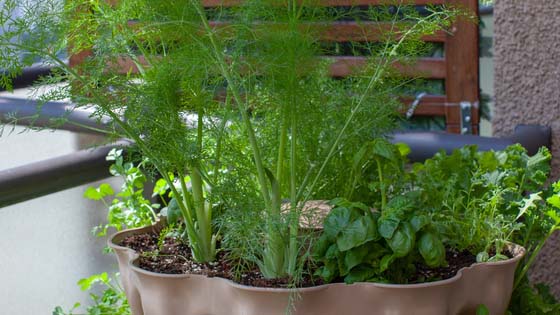
There are various types of trellises that can support your climbing vegetables:
– Outdoor Garden Trellis: Perfect for climbing veggies looking for a bit of support.
– Raised Garden Bed Trellis: Ideal for compact spaces, these trellises can elevate your growing experience.
– Vertical Garden Tower: A clever solution for cultivating a wide range of vertical garden vegetables and herbs in a small footprint.
– Tomato Cages: Strong champions for your heavy-lifting tomatoes.
– Arched Trellis: These not only create a stunning focal point but also provide excellent support for vining plants, making your garden both functional and beautiful.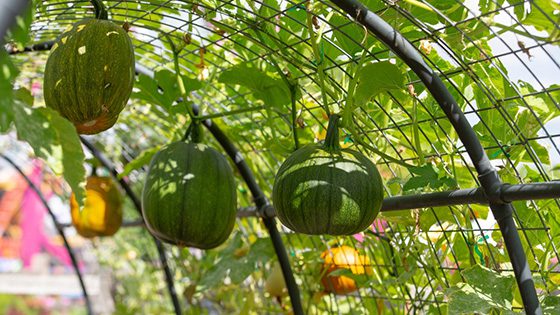
Ready to start your vertical vegetable garden?
Vertical gardening is an exciting and efficient way to fill your space with health-focused, homegrown produce. Whether you choose a garden trellis or a vertical planter, these methods are perfect for small spaces and big dreams! Start exploring vertical garden vegetables today, and enjoy the delicious rewards of your own fresh produce.
We’d love to see your vertical veggie gardens!
Share your trellis gardening ideas with us—tag @velcrobrand.au on social media. Happy planting!



